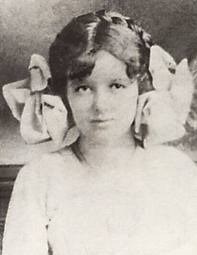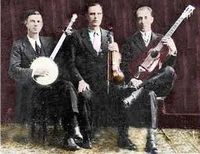Annotation:Little Grave in Georgia: Difference between revisions
No edit summary |
m (Text replacement - "garamond, serif" to "sans-serif") |
||
| (7 intermediate revisions by one other user not shown) | |||
| Line 1: | Line 1: | ||
'''Back to [[{{BASEPAGENAME}}]]''' | '''Back to [[{{BASEPAGENAME}}]]''' | ||
---- | ---- | ||
<p><font face=" | <p><font face="sans-serif" size="4"> | ||
'''LITTLE GRAVE IN GEORGIA'''. Old-Time, Song & Waltz. Recorded by North Georgia fiddler Earl Johnson [http://en.wikipedia.org/wiki/Earl_Johnson_%28fiddler%29] (1884-1965). The song The melody was also used by Uncle Dave Macon for his "[[Over the Mountains]]." | '''LITTLE GRAVE IN GEORGIA'''. Old-Time, Song & Waltz. Recorded by North Georgia fiddler Earl Johnson [http://en.wikipedia.org/wiki/Earl_Johnson_%28fiddler%29] (1884-1965). The song is based on the Mary Phagan murder in Atlanta that riveted the South in 1913. A nothern Jewish businessman, Leo Frank [http://en.wikipedia.org/wiki/Leo_Frank], was convicted of the murder of the 13 year old girl and sentenced to prison, however, he was broken out of jail, kidnapped an lynched within a year. | ||
[[File:phagan.jpg|200px|thumb|left|Mary Phagan]] | |||
Several songs were written about the sensation event, including Fiddlin' John Carson's and Rosa Lee Carson's "Little Mary Phagan" and Fiddlin' John Carson's "The Grave of Little Mary Phagan" (1925). Johnson's song is a version of the latter-named John Carson song. Carson and Johnson, both from Atlanta, were friends, neighbors and sometime playing partners. | |||
[[File:johnson.jpg|200px|thumb|right|Earl Johnson & His Dixie Clodhoppers]] | |||
<br> | |||
<br> | |||
The melody was also used by Uncle Dave Macon for his "[[Over the Mountains]]." | |||
<br> | <br> | ||
<br> | <br> | ||
</font></p> | </font></p> | ||
<p><font face=" | <p><font face="sans-serif" size="4"> | ||
''Source for notated version'': | ''Source for notated version'': | ||
<br> | <br> | ||
<br> | <br> | ||
</font></p> | </font></p> | ||
<p><font face=" | <p><font face="sans-serif" size="4"> | ||
''Printed sources'': | ''Printed sources'': | ||
<br> | <br> | ||
<br> | <br> | ||
</font></p> | </font></p> | ||
<p><font face=" | <p><font face="sans-serif" size="4"> | ||
''Recorded sources'': <font color=teal>Okeh 45194 (78 RPM), Earl Johnson's Clodhoppers (1927).</font> | ''Recorded sources'': <font color=teal>Document Records, "Earl Johnson Vol. 2 1927 - 1931" (1997). Okeh 45194 (78 RPM), Earl Johnson's Clodhoppers (1927).</font> | ||
</font></p> | </font></p> | ||
<br> | <br> | ||
Latest revision as of 15:16, 6 May 2019
Back to Little Grave in Georgia
LITTLE GRAVE IN GEORGIA. Old-Time, Song & Waltz. Recorded by North Georgia fiddler Earl Johnson [1] (1884-1965). The song is based on the Mary Phagan murder in Atlanta that riveted the South in 1913. A nothern Jewish businessman, Leo Frank [2], was convicted of the murder of the 13 year old girl and sentenced to prison, however, he was broken out of jail, kidnapped an lynched within a year.

Several songs were written about the sensation event, including Fiddlin' John Carson's and Rosa Lee Carson's "Little Mary Phagan" and Fiddlin' John Carson's "The Grave of Little Mary Phagan" (1925). Johnson's song is a version of the latter-named John Carson song. Carson and Johnson, both from Atlanta, were friends, neighbors and sometime playing partners.

The melody was also used by Uncle Dave Macon for his "Over the Mountains."
Source for notated version:
Printed sources:
Recorded sources: Document Records, "Earl Johnson Vol. 2 1927 - 1931" (1997). Okeh 45194 (78 RPM), Earl Johnson's Clodhoppers (1927).
Back to Little Grave in Georgia
